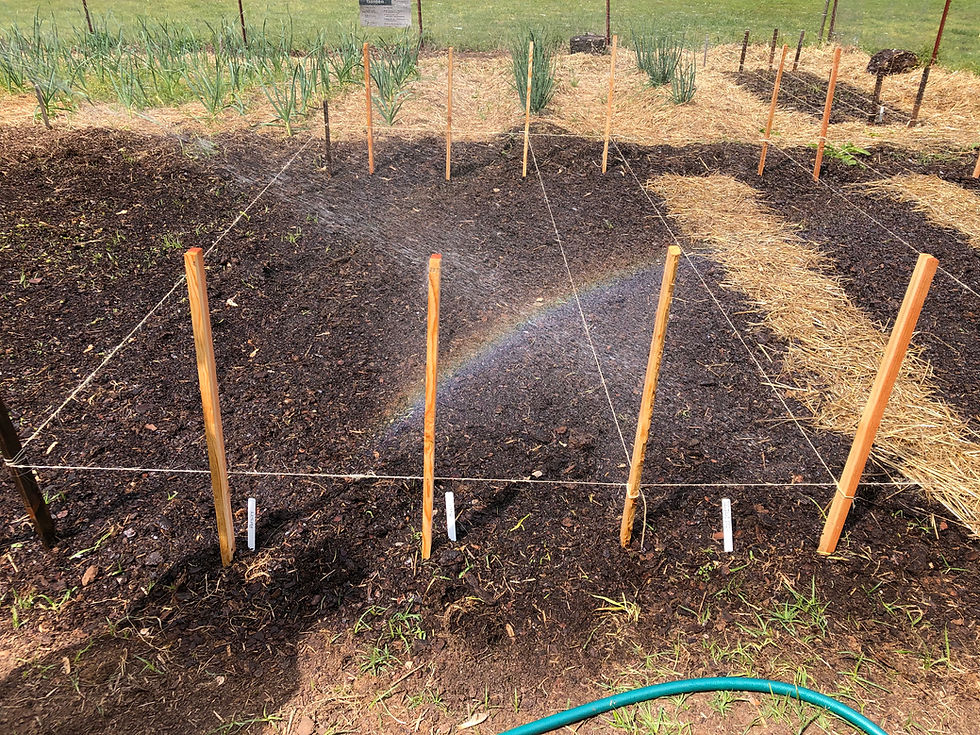Not all plants are equally thirsty: a guide to watering
- Autumn Shultz
- Mar 23, 2021
- 2 min read
Updated: May 4, 2021
When should you water?
Consistent watering can be a good habit, but a better habit is feeling your soil to determine watering needs.
• Pick up a small handful of garden soil.
• When the soil sticks in your hand, and you can form a ball, it is moist enough.
• But if it barely holds together in your hand, or if the surface looks hard, baked, or even cracked, it’s time to water.
Water early in the day so the foliage has time to dry off in the sun. This will help avoid fungal diseases like Powdery Mildew, Downy Mildew, and Blight.
How much should you water?
Most vegetable plants require 1 to 2 gallons of water a week.
Water deeply - to 5 or 6 inches down. Frequent light watering will just evaporate quickly and won’t allow moisture to build up in the soil and be available to plants in the heat of the day. Depending on the depth of your plant’s root system (shallow rooted plants may require more watering than deeply rooted ones) you may find yourself watering 2 or even 3 times a week in the hot Tennessee summers.
Mulch!
Adding a 2-3 inch layer of mulch (grass clippings, dead leaves, shredded newspaper, un-dyed wood mulch, or straw) to the whole top of your garden bed will maintain soil moisture by avoiding evaporation.
Watering Chart
Beans - When flowers form & during pod development - 2 gal./week
Beets - Before soil gets bone-dry - 1 gal./week
Broccoli - Don’t let dry 4 weeks after transplanting. Head development. - 1-1 ½ gal./week
Brussels sprouts - Don’t let soil dry out for 4 weeks after transplanting. - 1-1 ½ per week
Cabbage - Head development. Water frequently in dry weather. - 2 gal./week
Carrots - Early root enlargement. Before soil gets bone-dry - 1 gal./week
Cauliflower - Water frequently for best crop. - 2 gal./week
Celery - Water frequently for best crop. - 2 gal./week
Corn - When tassels form & when cobs swell - 2 gal./week
Cucumbers - Flowering & fruit development. Water frequently. - 1 gal./week
Lettuce/Spinach - Water frequently for best crop. - 2 gal./week
Onions - In dry weather, water in early stage to get plants going. - ½-1 gal./week if soil is very dry
Parsnips - Before soil gets bone-dry - 1 gal./week
Peas - When flowers form & during pod-forming & picking - 2 gal./week
Peppers - Steady supply from flowering through harvest - 2 gal./week
Potatoes - Tuber set & enlargement when the size of marbles - 2 gal./week
Radishes - Plentiful, consistent moisture for root enlargement - 2 gal./week
Squash - Water frequently for best crop. - 1 gal./week
Tomatoes - For 3 - 4 weeks after transplanting & when flowers/fruit form - 1 gal. 2x/week

Comentarios